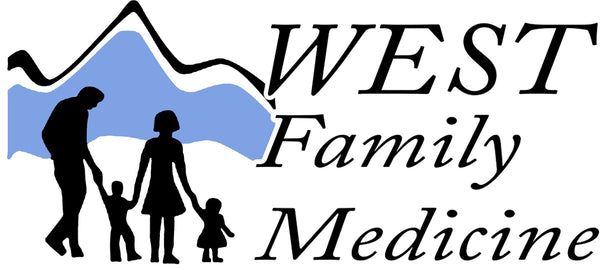
Common Childhood Illnesses and When to See a Pediatrician
Share
As a parent, it’s natural to worry when your child isn’t feeling well. From sniffles to stomach aches, kids experience a variety of illnesses as they grow, especially as their immune systems develop. While many childhood illnesses are mild and can be treated at home, some require a visit to the pediatrician to ensure your child gets the care they need.
At West Family Medicine, we’re here to help guide you through the most common childhood illnesses and when it’s time to seek professional care.
1. The Common Cold
Symptoms: Runny nose, sneezing, coughing, mild fever, sore throat, congestion, fatigue.
The common cold is one of the most frequent illnesses in children, especially during colder months or when they start school. Kids can catch several colds a year due to their developing immune systems.
When to See a Pediatrician:
• High fever (over 102°F) that lasts more than two days
• Difficulty breathing or wheezing
• Symptoms lasting more than 10 days without improvement
• Signs of ear infection (ear pulling, irritability)
2. Ear Infections
Symptoms: Ear pain, trouble hearing, fever, irritability, tugging at the ear, fluid drainage from the ear.
Ear infections are common, especially in younger children. They often follow a cold or upper respiratory infection, leading to fluid buildup in the middle ear.
When to See a Pediatrician:
• Severe or persistent ear pain
• Fever over 101°F
• Fluid or pus draining from the ear
• Trouble balancing or hearing
3. Stomach Flu (Gastroenteritis)
Symptoms: Nausea, vomiting, diarrhea, stomach cramps, fever, dehydration.
Gastroenteritis, commonly known as the stomach flu, is caused by viruses like norovirus or rotavirus. It spreads easily among children, especially in schools or daycare.
When to See a Pediatrician:
• Signs of dehydration (dry mouth, no tears when crying, reduced urination)
• Vomiting or diarrhea lasting more than two days
• High fever or blood in vomit/stool
• Severe abdominal pain
4. Hand, Foot, and Mouth Disease
Symptoms: Fever, sore throat, painful red spots or blisters on hands, feet, and inside the mouth, reduced appetite.
Hand, foot, and mouth disease is a common viral infection among young children, particularly in daycare settings. It’s usually mild but can cause discomfort due to mouth sores.
When to See a Pediatrician:
• Child refuses to eat or drink due to mouth pain
• High or persistent fever
• Signs of dehydration
• Worsening blisters or signs of infection
5. Strep Throat
Symptoms: Sore throat, difficulty swallowing, fever, swollen lymph nodes, white patches on tonsils, headache.
Strep throat is a bacterial infection that requires antibiotic treatment. It’s most common in school-aged children and spreads through coughing or sneezing.
When to See a Pediatrician:
• Severe sore throat with difficulty swallowing
• Fever over 101°F
• Rash (indicating scarlet fever)
• If strep is suspected, as antibiotics are needed for treatment
6. Respiratory Syncytial Virus (RSV)
Symptoms: Runny nose, coughing, wheezing, fever, rapid breathing, reduced appetite.
RSV is a common respiratory virus that can lead to serious complications in infants and young children, such as bronchiolitis or pneumonia.
When to See a Pediatrician:
• Difficulty breathing or wheezing
• High fever or lethargy
• Signs of dehydration
• Rapid or labored breathing
7. Pink Eye (Conjunctivitis)
Symptoms: Red, itchy eyes, discharge, excessive tearing, crusting around the eyes (especially in the morning).
Pink eye can be caused by bacteria, viruses, or allergies. It’s highly contagious, particularly in daycare and school settings.
When to See a Pediatrician:
• Yellow or green discharge from the eye
• Eyes stuck shut after sleep
• Swelling around the eyes
• Symptoms not improving after a few days
When to Trust Your Instincts
As a parent, you know your child best. If something doesn’t seem right or your child is showing unusual symptoms, it’s always a good idea to reach out to a pediatrician. Early intervention can prevent minor illnesses from becoming more serious.
General Guidelines for Seeing a Pediatrician:
• High or persistent fevers (especially in infants under 3 months)
• Difficulty breathing or wheezing
• Dehydration signs (dry mouth, no tears, decreased urination)
• Rashes accompanied by fever
• Severe or worsening symptoms
At West Family Medicine, we’re committed to providing compassionate and comprehensive care for your little ones. Whether it’s a common cold or something more serious, our team is here to support your family’s health every step of the way.

